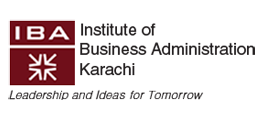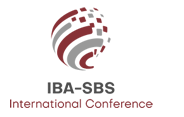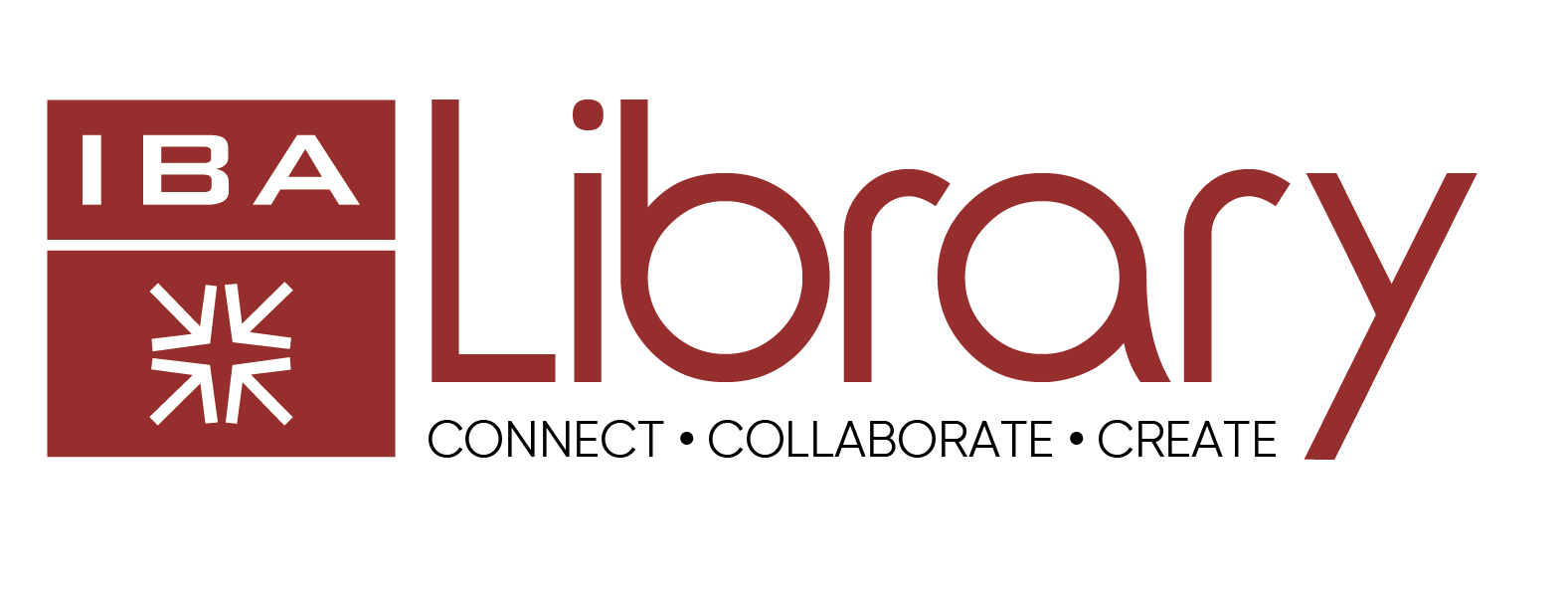Submission Policies & Guidelines
Conference Paper Policies
- At least one author of submitted papers needs to register for the conference to present the paper. Any paper not presented at the conference will not be published in the conference proceedings.
- A paper may only be submitted to a single track of the conference. The same article submitted for more than one track may be rejected from the conference.
- An author may only be the author or co-author for a maximum of three papers submitted in any of the tracks of the conference. For authors who have submitted more than three papers as author or co-author would risk their work not being considered for review.
- In the case of an author who is unable to travel to the conference to present their work, either due to their inability to obtain a valid visa or any other cause, a cancellation fee would be charged from their registration.
- Authors may submit a full paper, working paper, or an extended abstract of no more than 4 pages including figures, tables, etc.
Guidelines for submitting manuscripts
You will need to create an account for the conference and will be guided through the submission process. Please keep the following points in mind while submitting your paper(s):
- All papers must be submitted in MS Word, with double-spaced paragraphs and 12-point Times New Roman font.
- The word count for all submitted papers should be between 2,500 and 7,500 words. If an accepted paper does not meet this criterion, the conference review committee will request compliance with the word limit.
- The first page of your manuscript must include the following information:
- Title (bold, all capital letters)
- Author Names, University Affiliations, Email Addresses
- Keywords: 4-5 keywords
- The second page should begin with the heading ABSTRACT (centered, all capital letters), followed by an abstract of no more than 200 words.
- The Abstract should be followed by the heading INTRODUCTION (left-aligned, all capital letters).
- In the text, use the following heading structure:
- MAJOR HEADING (bold, left-aligned, all capital letters)
- SECONDARY HEADING (bold italics, left-aligned, title style capital letters)
HEADING STRUCTURE IN THE MAIN TEXT:
- MAJOR HEADING (bold, left-aligned, all capital letters)
- SECONDARY HEADING (bold italics, left-aligned, capital letters)
- All text must be LEFT-ALIGNED in the main body of the paper.
REFERENCES:
- Ensure that:
- All references cited in the paper appear in the reference list.
- There are no references in the list that are not cited in the main text.
- All references follow APA style guidelines.
TABLES AND FIGURES:
- All tables and figures must be sequentially numbered and placed within the main document.
- Additional tables can be included in an annexure.
Guidelines for submission of extended abstract
- LENGTH & FORMATTING
- The extended abstract should be between 1,000 – 1,500 words (excluding references).
- Use Times New Roman, 12-point font, 1.5 line spacing, and justified text alignment.
- Margins: 1-inch (2.54 cm) on all sides.
- Use APA 7th edition for citations and references.
- STRUCTURE OF THE EXTENDED ABSTRACT
The extended abstract should be structured as follows:- TITLE
- Clear and concise, reflecting the main theme of the research.
- AUTHOR(S) INFORMATION
- Full name, affiliation, email address, and corresponding author details.
- INTRODUCTION
- Brief background of the study.
- Research problem and objectives.
- Significance of the study.
- Contribution of the study.
- THEORETICAL FRAMEWORK & HYPOTHESES (IF APPLICABLE)
- Key theoretical lens used in the study.
- Explanation of core concepts and relationships.
- METHODOLOGY
- Research design (quantitative, qualitative, or mixed-method).
- Sample and procedure.
- Measures.
- Analytical techniques.
- KEY FINDINGS
- Summary of preliminary or final results.
- Insights drawn from data analysis.
- DISCUSSION & CONTRIBUTIONS
- Theoretical implications.
- Practical implications.
- Limitations and future research directions.
- REFERENCES
- List of key references following APA 7th style.
- TITLE
Conference Case Track
This year, we are excited to host the 2nd Case Track as part of the IBA-SBS 4th International Conference 2025, centered around the theme "Transforming Business for People & Planet."
We welcome case submissions across a wide range of areas, including but not limited to Marketing, Sports, Finance, Management, Accounting, and Law. While most cases will align with core business school disciplines—such as finance, strategy, marketing, the sports ecosystem, operations, governance, entrepreneurship, and organizational behavior—we also encourage submissions that explore alternative contexts and emerging challenges. We strongly favor unambiguous, decision-oriented cases based on primary research, including interviews and field visits. While certain details may be anonymized, all cases must be grounded in real events, genuine individuals, and actual institutions to ensure authenticity and relevance.
SUBMISSION GUIDELINES
Format: Cases should be written in English and follow a clear, concise structure. They must include an abstract, introduction, background information, case narrative, and teaching notes.
Length: Each case study should not exceed 5,000 words.
SUBMISSION PROCESS
- All cases must be submitted in MS Word, with paragraph spacing set at with single spacing, and a 12-point Times New Roman font.
- The first page of your case manuscript must include the following information:
- TITLE (bold, all capital letters)
- Author Names, University Affiliations, Email Addresses
- Keywords: 4-5 keywords
- The second page of your case manuscript should start with the heading: ABSTRACT, centered and in capital letters. This should be followed by an abstract of not more than 200 words.
- The Abstract should be followed by the heading INTRODUCTION, left-aligned in capital letters.
- In the text, use the following heading structure:
- MAJOR HEADING (bold, left-aligned, all capital letters)
- Secondary Heading (bold italics, left-aligned, title style capital letters)
- All text must be left-aligned in the main body of the paper.
- REFERENCES: Please ensure that:
- All references mentioned in the case paper are provided in the reference list, and there is no reference in the list that is not mentioned in the main text of the paper.
- All references should follow the APA style guidelines.
- All tables and figures must be sequentially numbered and placed within the main document.
- Additional tables can be put in an annexure.
Deadlines: The deadline for submissions is May 5, 2025. Late submissions will not be accepted.
Criteria: Cases should be original, and unpublished.
REVIEW PROCESS
Each submission will undergo a rigorous double-blind peer-review process. Cases will be evaluated based on their relevance to the theme, originality, depth of content, and potential for educational impact.
ROUNDTABLE TRACKS
Round table discussions on significant domains will be held.
DETAILS AND INSTRUCTIONS
USING AI AND AI-ASSISTED TECHNOLOGY:
Authors using Generative AI in their submissions, including AI-assisted software, must also include prompts, outputs, and adaptations used in the process. Additionally, a footnote should be added to acknowledge AI usage.
ROUNDTABLE TRACKS SUBMISSION DETAILS
Please provide TWO files:
1. A compendium comprising a case and a manual for instructors (1 file). In order to streamline the double-blind review process, it is imperative that this file does not include any identifying information that could potentially reveal the author(s) or their affiliated institution.
2. A concise case summary, limited to one page, including the names of the authors.
ELIGIBLE CASES
Cases can encompass subject matter within any academic field that benefits from lively classroom discourse. The cases must be authentic and derived from actual events, individuals, and organizations. They should not have been previously published or approved for publishing in any other medium, such as journals or books.
SUBMISSION INSTRUCTIONS
Authors should submit their case and case summary by May 5, 2025, to be considered for participation in the conference. The link for conference submissions is https://ir.iba.edu.pk/cgi/ir_submit.cgi?context=sbsic
To submit a case to the 4th IBA SBS International Conference, authors must have at least one author, as a registered delegate attend the case Roundtables, and those submitting cases to two tracks must have a co-author present.
CASE FORMAT
The case must be submitted in a .doc or .docx format, with single spacing and a blank line between paragraphs. The typeface used should be Times New Roman, with a font size of 12 points. The case should typically not exceed a total of 30 pages, encompassing all exhibits and the Instructor's Manual. Except for the "Review Copy" notice mentioned below and the suggested limit on the number of pages for the case, there are no specific instructions provided for the layout of the case. In order to maintain a blind review process, kindly refrain from including any author information in your work (check the File Properties to ensure that your name is not automatically indicated as the author of the paper). The subsequent notification ought to be displayed at the lowermost section of the initial page of the manuscript:
INSTRUCTOR’S MANUAL FORMAT
The Instructor's Manual should be formatted with single spacing and a blank line between paragraphs, utilizing Times New Roman font with a font size of 12 points. The Instructor's Manual and Case should typically not exceed a total of 30 pages, encompassing all exhibits. It should be appended at the conclusion of the .doc or .docx (Word) file in which the Case is stored.
The Instructor's Manual should comprise the subsequent components:
- A concise (maximum one-page) summary of the case
- Specification of the proposed course(s) and levels, including the case's placement within the course, the subjects it addresses, and its unique educational objectives. The Research Methods section should provide a comprehensive account of the research approach used to collect the case information. This includes any potential connections between the case authors and the organization, as well as the methods employed to acquire the case data. Detail any disguises that have been enforced.
- Proposed pedagogical methodologies or a pedagogical blueprint, encompassing the anticipated progression of discourse and pivotal inquiries, enactments, deliberations, utilization of video aids or printed materials, a whiteboard strategy, etc.
- Authors are advised to provide instructions on how to teach the case in both online and classroom environments. This includes providing assignment questions for students to prepare for, along with a detailed analysis of each issue. Additionally, if applicable, authors should give an epilogue or follow-up material regarding the actual decision made.
CASE AND INSTRUCTOR’S MANUAL RHETORICAL GUIDELINES
Since a case pertains to a specific circumstance at a particular moment, it is necessary to express it in the past tense, except for any quoted material. Most cases commence with a concise (less than one page) case "opener" that establishes the context by presenting the case protagonist, the timeframe, the organization, and the scenario. Frequently, the subsequent segment comprises a comprehensive overview of the company and/or industry, succeeded by parts that analyze the circumstances. Exhibits ought to be consolidated and placed towards the conclusion of the case. Every exhibit must include a numerical identifier, a title, and a reference to its source. The essential citations should be incorporated inside the text as endnotes, while the bibliographic details should be limited to a "Reference List" at the conclusion of the case, following the APA format.
ONE-PAGE CASE SUMMARY
Please be aware that this document must be provided as a separate file, and it is crucial that you adhere to the formatting rules outlined below.
- The document should have one-inch margins on all sides (top, bottom, and sides).
- The maximum length of the document should be one page.
- The font used should be Times New Roman, with a font size of 12 points.
- The text should be single-spaced and left-aligned, except for the title. A line break is used to separate paragraphs.
If you have general questions related to the conference or submissions, please contact at sbsic@iba.edu.pk
PUBLICATION AND PRESENTATION OPPORTUNITIES
Accepted cases will be considered for publication. Authors will also have the opportunity to present their cases at the IBA SBS Case Conference, providing a platform for academic and professional networking.



